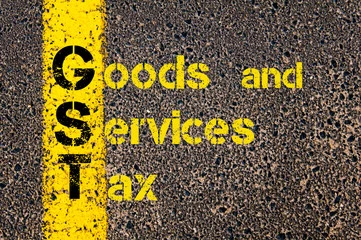In the earlier video, we saw what is ITC, which allows a supplier to take credit of the taxes paid on the input, in order to discharge the liability of GST. However, this availability of input credit is dependant on the fact that the supplier necessarily has some tax liability. There can be certain situations in which there is no tax on the supply.
For eg. books; there is no tax liability on books. Since there is no tax liability on books, there is no question of the supplier of books taking credit of inputs. Therefore, the input tax credit is not available to such a supplier.
However, there are certain situations in which even though there is no tax liability on the supplier, still the law permits the supplier to take input credit. Such situations are called as zero-rated supplies, which essentially means that there is a supply but it is not taxable and still the supplier is entitled for input tax credit.
Under GST law, there are two such situations which are considered as zero-rated. The first situation is where the supplier is making an export. Export is not taxable. Therefore, if the supplier is exporting certain goods and services there is no tax. But such a supplier is entitled to credit of input taxes paid for making such a supply. The second situation is a similar situation which is supply made to a special economic zone or a unit in a special economic zone.
For example, if the exporter was exporting goods worth Rs1000 and the rate of tax was 10 per cent, ordinarily the supplier would have required to collect Rs 100 as GST. But this is an export situation, and therefore the Rs 100 is not to be charged.
Let us take an example which will distinguish between zero-rated and exempt supplies. If there is a person who is making a supply of say Rs 1000 and 10 per cent is the tax rate, the output tax would be Rs 100. In this situation if the input was worth Rs 100 and the input tax credit was Rs 10, then the supplier would have to pay only Rs 90 in cash and Rs 10 would be off-set against input tax credit. But if in the same situation there is no tax liability on the output side, namely, the transaction is exempt, then there is no requirement to pay Rs 100 to the government. But simultaneously the Rs 10 credit is lost for the supplier. Therefore it becomes a cost for the supplier.
Zero-rating is a concept which differs here. Even though there is no tax liability on the output side, still the supplier is entitled to take credit of input tax and since this input tax cannot be used to pay any liability, this input tax credit is available as refund. Let us see how it works out.
There are under the current GST law, two types of zero-rated supplies. The first is when there is an export of supply. Second is when the supply is made to an SEZ unit or a SEZ developer. In both these cases the law treats the supply to be a zero-rated supply.
Coming back to the same example where there is no output tax liability but input tax credit of Rs 100 is available, in this situation the supplier is entitled to take refund of the input tax credit from the government.
Let us compare this with a transaction which is exempt and for this purpose we use the earlier example. In the earlier example the Rs 10 input tax credit was not available to the supplier. In a zero-rated supply, the supplier can ask for refund from the government of this Rs 10 .
So the net distinction is that in exempt supply the credit gets lost, whereas in a zero-rated supply the credit is available as refund to the supplier.

